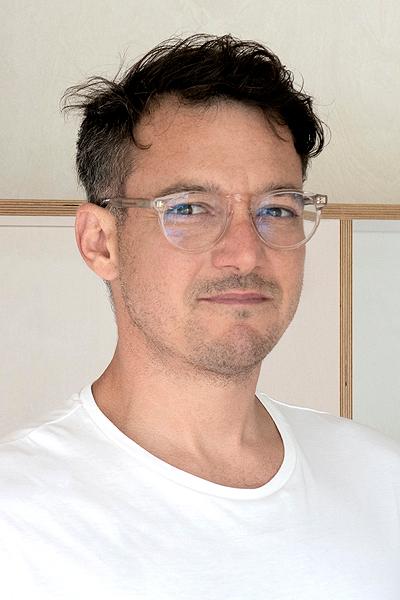Ignacio Acosta
Researcher at Centrum för mångvetenskaplig forskning om rasism (CFR)
- E-mail:
- ignacio.acosta@cemfor.uu.se
- Visiting address:
- Engelska parken
Thunbergsvägen 3C, vån 3 hus 22 - Postal address:
- Box 511
751 20 Uppsala
More information is available to staff who log in.
Short presentation
Ignacio Acosta (www.ignacioacosta.com) is an artist and researcher working in territories under pressure from extractive industries. He leads FORMAS funded project Indigenous perspectives on forest fires, drought and climate change: Sápmi based at CEMFOR, Uppsala U. and is part of Traces of Nitrate (www.tracesofnitrate.org), a UK AHRC funded collaborative visual research based at the Royal College of Arts and the University of Brighton.
Biography
Ignacio Acosta is an artist and researcher working in territories under pressure from extractive industries. His multi-layered collaborative practice and spatial installations seek to connect audiences with these complex but critical concerns.
Recent exhibitions include: Inverting the Monolith, MBAL, Switzerland (2022); Ewiges Eis (Eternal Ice), Museum Sinclair-Haus in Bad-Homburg, Germany (2022); Mining Photography Museum für Kunst und Gewerbe Hamburg, Germany (2022); Archaeology of Sacrifice, Zeppelin Museum Friedrichshafen, Germany (2020); Human Nature, Västerbottens Museum, Sweden (2020); Tales from the Crust, Arts Catalyst, London, England (2019); Drones y Tambores, Museo de la Solidaridad Salvador Allende, Santiago, Chile (2019); Litte ja Goabddá; Ájtte Museum, Jokkmokk, Sweden (2019); Tierra, CDAN / Centro de Arte y Naturaleza, Huesca, Spain (2019); Game of Drones, Zeppelin Museum Friedrichshafen, Germany (2019); Drone Vision, Hasselblad Centre, Göteborg, Sweden (2018); Mapping Domeyko, Łaźnia Centre for Contemporary Art, Poland (2018); Copper Geographies, National Waterfront Museum, Swansea, England (2017); Traffiking the Earth, MAC, Museo Arte Contemporáneo, Chile (2017).
Between 2012 and 2016, Acosta undertook a practice-based PhD at the University of Brighton, UK, as part of Traces of Nitrate: Mining History and Photography between Britain and Chile a research project developed in collaboration with Art and Design Historian Louise Purbrick and photographer Xavier Ribas, which has been funded by the Arts and Humanities Research Council (AHRC). In 2018, the publication that stems from his PhD Copper Geographies was published by Editorial RM.
Acosta is currently a Post-Doctoral Research Fellow at the Centre for Multidisciplinary Studies on Racism (CEMFOR) Uppsala University, Sweden where le leads a 4-year visual research project Indigenous perspectives on forest fires, drought and climate change: Sápmi (2022-2026), a FORMAS (Swedish Research Council for Sustainable Development) funded visual research project developed with Sámi journalist Liz-Marie Nilsen (project coordinator) and Sámi scholar May-Britt Öhman (post-doctoral supervisor). The project brings forward Indigenous/Sámi knowleges on forest fires, drought and climate change.
He is also a Post-Doctoral Research Fellow at the Royal College or Arts (RCA) and University of Brighton as part of the Solid Water, Frozen Time, Future Justice: Photography and Mining in the Andean Glaciers (2021-2024), a UK Arts and Humanities Reseach Council (AHRC) 3-year collaborative visual research project with Louise Purbrick and Xavier Ribas. Their project documents the effects of copper and lithium mining on glacier systems of the Chilean Andes.
Research
Acosta works in places made vulnerable through the exploitation of ecologies by colonial intervention and intensive capitalisation. He is devoted to the understanding of sites and landscapes that, although often neglected, are of global significance. His projects focus upon resistance to mining on valuable natural environments and, through technologies of seeing, he develops work towards the generation of meaningful visual and spatial narratives.
His interconnected research strands and projects – many of which span several years – involve extensive fieldwork, investigative analysis, audio-visual documentation, and critical writing on sites and materials of symbolic significance. The artist's interventions positions geological and technological forms, as well as human and non-human relationships, in the same landscape. Situated within the urgent need for artistic approaches to critically address the depleting landscapes created by mining, his work creatively negotiates the conflicts buried within our living world.
His work explores the possibilities of drone technologies – and most recently camera traps – as tools of resistance within the struggle for decolonisation. Drones are best known for their role in military surveillance; by artistically appropriating these machines, Acosta offers new ways of seeing ecology and counter-action on a planetary scale. Strategic juxtapositions are a key feature of his work – both ideologically, and aesthetically in his visually complex pieces. Yet it is the research practice that underpins his artistic practice.
Through thorough, investigative and ethical practices, his methodology is akin to a forensic investigator in his desire to uncover and expose highly ambivalent power dynamics. Moreover, the multiple layers that comprise his individual research process contribute to larger, vibrant collaborations with activists, artists, scientists, writers and Indigenous Peoples. Collaboration is a particularly important, indeed essential, part of his investigation and the representation of sites in which he works. His research is distributed through exhibitions, public events, publications and online platforms. At a time of uncertain futures, his presentations remain open-ended and can be used as source for education, activism and visual culture.

